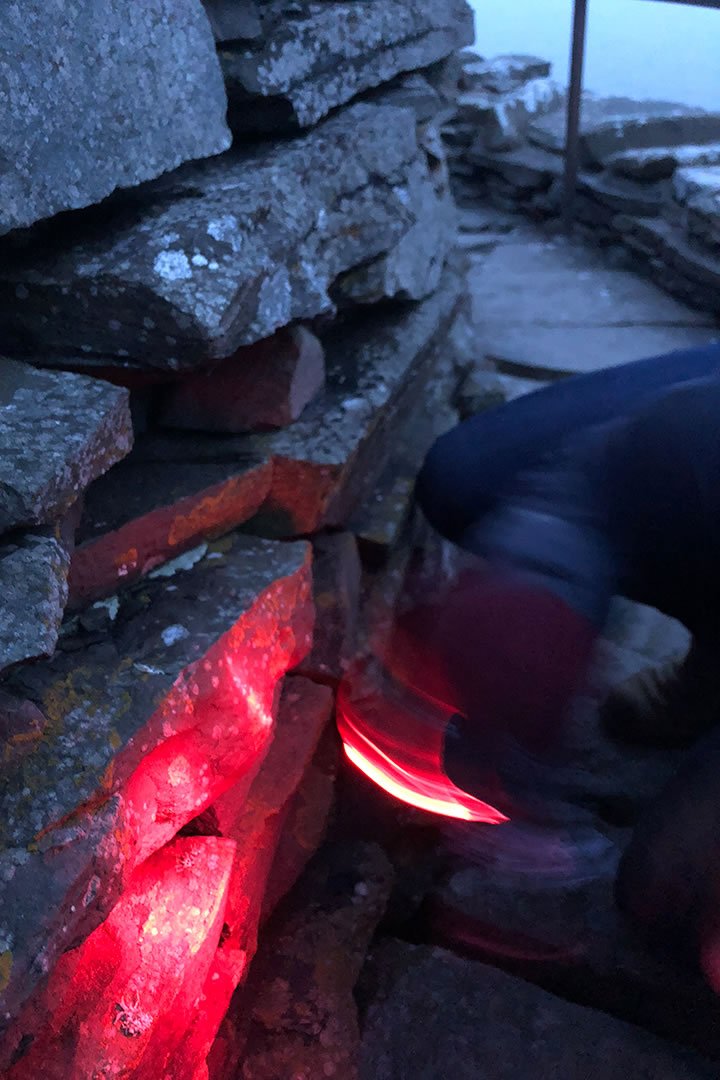The Storm Petrel experience at the Mousa Broch
Image from Lady Cottingham's Book of Pressed Fairies.
I was once told that to experience the sound of the storm petrels within the walls of the Mousa Broch was like listening to the sound of a fairy being sick. These are the words of well-known Shetland naturalist, Bobby Tulloch who did so much to put Shetland’s natural heritage on the world stage, and with his words ringing in my ears, I knew I had to experience it myself.
With images from Lady Cottingham's book of childhood dancing in my mind, curiosity found me standing on the pier at Sandsayre on Wednesday night, waiting for the Mousa Boat to take us on the midnight trip to see these curious little birds. Armed with a pair of binoculars and dragging my good friend Helen along, we were in good spirits as we boarded the Solan IV for the short crossing to the now uninhabited island.
Going into Mousa at night is a completely different and unique experience compared to going in on a day trip. Landing in the summer dusk at 11pm feels slightly eery and the island has a more mysterious feel.
Once ensconced on the island, we took the short walk to the broch where we saw the latest addition to the isle – a wooden bench which sits on the 60° North latitude line. Rodney, skipper of the Mousa Boat, and a very good friend of mine, built it using driftwood which washed ashore on the island during last winter's gales.
Driftwood has always been important to Shetlanders. We live in an almost treeless landscape, and I believe it's ingrained into every one of us to squirrel away every last piece “in case it comes in handy”. A walk along the shoreline proves this as there are numerous piles of wood of varying sizes and quality 'laid up above the tideline' to be collected at a later date for some project or another and, despite best intentions, this 'later date' often never comes. That said, it's still an unwritten rule here in Shetland that wood laid up above the tideline must be left for the gatherer to collect, even if it has been there so long that it has started growing a fine coat of moss, or that it has been there for all of living memory and has begun the long process of rotting back into the ground. The wood is sacred and should be left well alone. However, rules of the shoreline over, back to the bench...
Mousa lies on the 60° North line, meaning that it is on the same latitude as St Petersburg, Helsinki, Oslo, parts of Alaska and Labrador Bay and, given the choice of any of those exotic destinations, there is nowhere else in the world I would have rather been on that particular Wednesday evening.
Approaching the 2,000-year-old broch was very atmospheric, it was shrouded in mist, giving a real air of mystery and intrigue.
Fascinating as the broch is, the real reason for our visit was to see the storm petrels returning to their breeding colony within the broch walls. Storm petrels are small seabirds who only come ashore during the breeding season in order to lay an egg.
Rodney's 60° North bench on the island of Mousa, Shetland
Mousa Beach
Mousa is home to 11,000 breeding pairs – with 3-400 breeding pairs making their home within the broch walls.
Prone to predation, they return to the breeding grounds at dusk to avoid capture from the great skua (bonxie) and black-backed gulls. Mousa is the perfect place for these vulnerable little birds as there are no ground predators on the island. Yes, Mousa has no rabbits, hedgehogs, rats or even mice. And as midnight approached the birds began to flock back to land, their flight chaotic and erratic as they circled the broch seeking out their familiar nest site – I even witnessed a mid-air collision (thankfully no storm petrels were injured).
Once settled into their nests we got the opportunity to listen to them so that I could try to offer a good description of their call. The first thing that struck me was that, despite their size, they are very noisy. I thought long and hard about how best to describe the sound and after much thought and deliberation, I can honestly report to you that they do in fact sound like fairies being sick.
Searching for the storm petrels within the walls of the Mousa Broch.
So, for anyone who is still in doubt, I suggest a midnight trip to Mousa, and for those who just wish to experience the best that Shetland has to offer during the Simmer Dim (or midsummer), then I would highly recommend a trip to see the stormy petrels in Mousa.
Booking for this trip is essential and can be done here.









